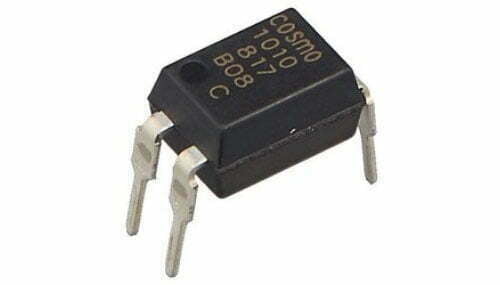What is ultra wideband technology?
Ultra-wideband technology is a wireless carrier communication technology that uses a frequency bandwidth above 1GHz. It does not use the sinusoidal carrier in the traditional communication system, but uses nanosecond-level non-sinusoidal narrow pulses to transmit data. Therefore, It occupies a large spectrum, and despite the use of wireless communication, its data transmission rate can reach more than a few hundred megabits per second.
Ultra wideband functionality
Ultra-wideband technology directly modulates the impulse pulse with a very steep rise and fall time, so that the signal has a bandwidth of GHz order. It solves the major problems related to propagation that have plagued traditional wireless technology for many years.
How ultra wideband works?
Unlike most wireless technologies, ultra-wideband (UWB) works over pulsed radio. It uses a series of pulses over a wide frequency band, so it is sometimes called IR-UWB or pulsed radio UWB. By comparison: satellites, Wi-Fi, and Bluetooth use modulated sine waves over narrow frequency bands to transmit information.
where is ultra wideband available?
consumer electronics
UWB technology has become well-known in the field of consumer electronics in recent years. The main brands include:
- iPhone
Apple company has successively applied UWB solution in Apple Watch S6, HomePod mini smart speakers, iPhone12 series mobile phones and Aritag wireless trackers.
- Samsung
Samsung used the UWB solution on mobile phones. The specific models include Galaxy Note 20 Ultra, Galaxy Z Fold 2, S21+ and S21 Ultra. At the same time, Samsung also launched the SmartTag+ smart tracker using UWB technology.
automobile digital key
Car keys have experienced the development of mechanical keys, remote keys, NFC keys, and Bluetooth keys. The digital key turns wearable devices such as smart phones, NFC smart cards, smart watches and smart bracelets into car keys through precise Bluetooth positioning, NFC, UWB and other near-field communication technologies. In this way, comfortable and convenient car experience such as keyless entry and start, remote key authorization for others, and personalized vehicle settings can be realized.
industrial manufacturing
The RTLS real-time positioning system based on ultra-wideband technology is very mature at the industrial end. It is mainly used in location tracking, warehousing and logistics, wireless measurement, intelligent driving, augmented reality, competitive sports and other fields.
military radar
UWB is not a new technology. It was first used in military radar and communication applications under the name “pulse radio”. Since 2002, the US Federal Communications Commission (FCC) has authorized its use without permission and assigned it 3.1 The ~10.6GHz frequency band occupies more than 500MHz of bandwidth.
Ultra wideband vs bluetooth
Compared with the three well-known technologies of GNSS, Wi-Fi and Bluetooth low energy that can provide positioning services, the advantages of UWB technology are as follows:
First of all, the traditional global navigation satellite system (Global Navigation Satellite System, GNSS) can provide satellite positioning services, but because the satellite signals will be blocked by buildings, it cannot achieve indoor positioning.
Wi-Fi and Bluetooth typically use Received Signal Strength Indicators (RSSI) to determine location, showing only a rough classification of “weak” or “strong” received signals, with location accuracy up to the meter level.
There are three technologies for UWB positioning, namely TOF (Time of flight) time difference method, TDOA (Time Difference of Arrival) time difference of arrival and PDOA (Phase Difference Of Arrival) angle of arrival phase difference. While this only works at short ranges, it can determine the location of a signal source with an accuracy of less than 50cm (under optimal conditions and deployments) and very low latency.
Standard Organization of UWB Technology
Each wireless transmission technology usually has a standard organization responsible for the formulation of relevant standards and technical certification, such as Bluetooth SIG, Wi-Fi Alliance, International Telecommunication Union, etc. In the field of UWB technology, there are currently FIRA Alliance and UWBA ultra-wideband Union of two organizations.
FiRa Alliance
The FiRa Alliance is committed to developing and broadly adopting interoperable ultra-wideband (UWB) technology to bring secure fine-grained ranging and positioning capabilities to provide users with a seamless experience.
Members of the FiRa Alliance mainly develop products based on IEEE 802.15.4 standard UWB security fine-ranging technology, and develop application scenarios of UWB technology across various vertical business fields. The FiRa Alliance works closely with other industry groups such as IEEE, Wi-Fi Alliance, Car Connectivity Consortium (CCC) and others, focusing on UWB use cases operating in the available 6-9 GHz frequency bands.
UWBA
The UWB Alliance is focused on providing a favorable regulatory and spectrum management environment under the 802.15.4z standard to maximize the growth of the UWB market. The UWB Alliance aims to promote various vertical industries to demonstrate the value of UWB for IoT and Industry 4.0, building a global ecosystem in the entire UWB value chain from chips to services.
Additionally, the Ultra Wideband Alliance is currently advocating for new spectrum to expand UWB to 12.4 GHz and emerging higher frequency bands in Europe.






